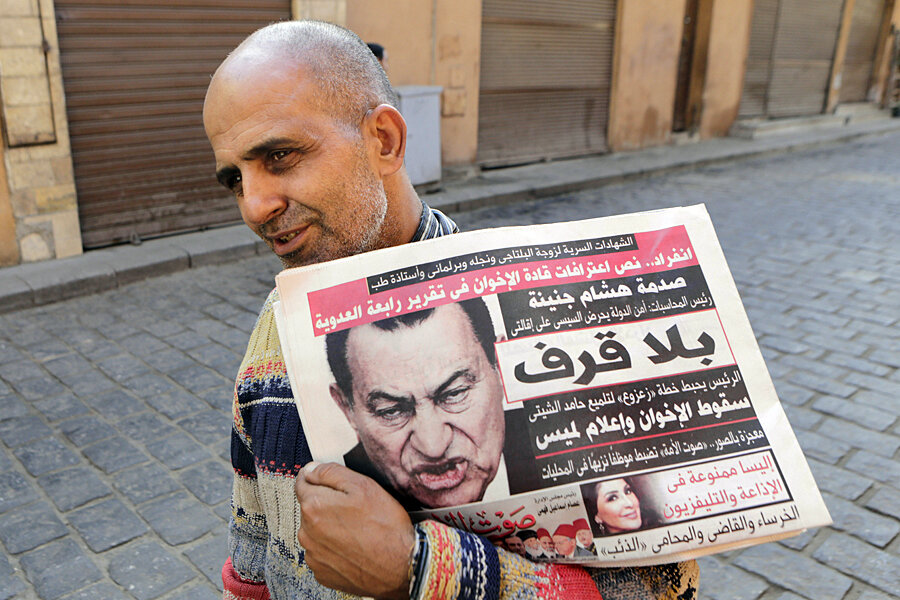Mubarak's release: proof of Egypt's newly confident military order
Loading...
The squashing of the last legal case against former Egyptian dictator Hosni Mubarak over the weekend – on a technicality no less – is a measure of the growing confidence of Egypt's resurgent military leaders.
The economy may remain in tatters and resentment against predatory police and officials may remain in many Egyptian hearts. But President Abdel Fattah al-Sisi and the military class he belongs to appear to have done what seemed impossible three years ago: They put Humpty Dumpty together again. Mubarak, who's already served a three-year corruption sentence, could be released at any moment, and the country is not in an uproar.
When mass protests broke out in January 2011, Mubarak's regime was sclerotic, his health questionable, and his unpopular son Gamal was being positioned to take power next. That gave important parts of the military elite something in common with millions of Egypt's poor: They wanted the next boss to come from their ranks, as Mubarak had, not some pharaonic succession to a man who eschewed the military for an MBA, a job at Bank of America – and who seemed more confident speaking in English than Arabic.
That, plus the context of the Tunisian uprising next door that had already toppled a dictator, and a US government that was terrified a regional client might instigate a bloodbath against democracy protesters, saw the military and police back off. Roughly 800 protesters died in the 18 days of the uprising – deaths Mubarak was tried for. But that's remarkably restrained when you consider the more than 600 protesters killed in a single day in 2013 following the coup that brought the military and then Gen. Sisi back to power, or the horrific lengths Syria's military has gone to to keep Bashar al-Assad in charge.
The protesters – the young, secular-leaning groups that started the uprising and the Islamists like the Muslim Brotherhood who joined them later – were ecstatic, and heady with an overestimation of their own power.
In February 2011, it was hard to find a single one who was remotely skeptical about the future. Secular/Islamist, socialist/capitalist, all would be worked out. "We're all Egyptians first. And we know the way back to Tahrir," was a fairly common refrain.
But President Sisi and the security forces around him aren't going to let protesters head back to Tahrir – at least, not without a much more serious fight than they encountered in 2011.
Since the coup against elected President Mohamed Morsi, of the Muslim Brotherhood, in July 2013 and Sisi's own election this May, he and the security services have masterfully reintroduced harsh controls on free expression and independent political organization, aided and abetted by xenophobic campaigns in the country's state controlled press. Practically the entirety of the Muslim Brotherhood leadership has been jailed – as have many of Egypt's young revolutionaries, under a new law that outlaws public protest.
There were briefly protests near Tahrir Square in Cairo after Mubarak's case was dismissed. But cannily prepositioned armored personnel carriers and cops with truncheons kept demonstrators out of the square itself. The nearby protests were violently dispersed by the police, with two of the protesters killed. Today, the square – also a major traffic hub for Cairo – was shut again for "security reasons."
This is what Tahrir looked like today in the early evening in Cairo:
The immediate inspiration for the Egyptian uprising in 2011 was police brutality, particularly the torture and murder of young businessman Khalid Said. Mubarak's case, at root, was also about police brutality. The interim military rulers of Egypt in 2011, led by Sisi, recognized raging public anger at the time, the reason they had Mubarak indicted for protester deaths in May 2011.
But the situation has changed. They've recovered the old tools of controlling – dictating to, in fact – the public. At the moment, it doesn't seem Sisi has much to fear.








